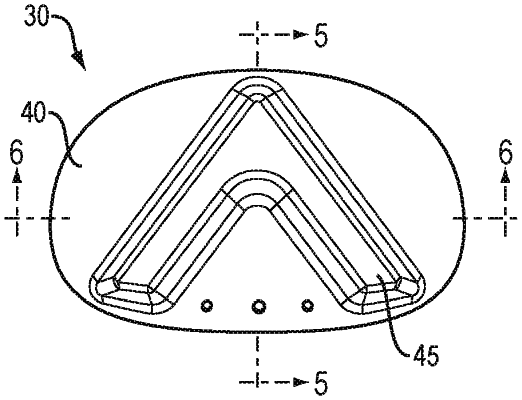| CPC A41D 13/0153 (2013.01) [A41D 13/0512 (2013.01); A63B 71/12 (2013.01); A41D 13/0568 (2013.01); A63B 2209/00 (2013.01)] | 19 Claims |

|
1. A shoulder pad assembly for protecting the shoulders and body of a wearer, the shoulder pad assembly comprising:
a first arch;
a second arch coupled to the first arch;
a first shoulder cap flexibly coupled to the first arch;
a second shoulder cap flexibly coupled to the second arch;
a first epaulet having a first connection area flexibly coupled to the first arch, the first epaulet overlying a portion of the first cap, and the first epaulet having a first outer surface and a first concave inner surface that defines a first inner cavity facing the first arch and the first shoulder cap; and
a second epaulet having a second connection area flexibly coupled to the second arch, the second epaulet overlying a portion of the second cap, the second epaulet having a second outer surface and a second concave inner surface that defines a second inner cavity facing the second arch and the second shoulder cap;
the first epaulet including a first stiffening ridge arrangement comprising:
a first stiffening ridge rising above the first outer surface and extending between a first location flanking the first connection area and a first convergence location near an outer edge of the first epaulet; and
a second stiffening ridge rising above the first outer surface and extending between a second location flanking the first connection area and the first convergence location, the first and second stiffening ridges converging at the first convergence location;
the second epaulet including a second stiffening ridge arrangement comprising:
a third stiffening ridge rising above the second outer surface and extending between a first location flanking the second connection area and a second convergence location near an outer edge of the second epaulet; and
a fourth stiffening ridge rising above the second outer surface and extending between a second location flanking the second connection area and the second convergence location, the third and fourth stiffening ridges converging at the second convergence location.
|